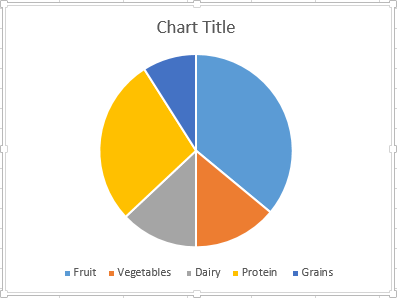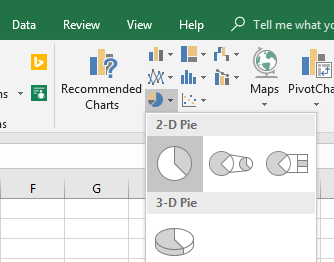

Often, the real story doesn’t lie in all the numbers in the chart, but it’s hidden in a few key data points. Let’s reapproach our example with that in mind.įirst, I’ll delete the data labels that I already put in place. See Format and customize Excel 2013 charts quickly with the new Formatting Task pane for more discussion about the Formatting Task Pane in general.

PIE CHARTS IN EXCEL 2013 SERIES
In the Formatting Task Pane, you can customize the way the data labels appear, change their size and alignment, change their text properties, and even add another data series for them to include. Here, I have double-clicked one of the data labels for the blue Drinks series. Though there are several ways to open the Formatting Task pane, the easiest is to double-click the data labels themselves. If you wish to go beyond basic text formatting and text box fills, many more formatting options are available on the Formatting Task pane. Use the Formatting Task pane for advanced options If I drag the label far from its default location, a leader line appears by default to show what data point the data label is associated with.īasic formatting of data labels is simple to achieve by using the Font section of the Home tab on the Excel ribbon. Once selected, I can drag that label wherever I want it on the chart. Here, I have selected only the Tue value of the blue Drinks series. To reposition any single data label, all I have to do is double-click the data label I want to move, then drag it to the desired position on the chart. When I click Add Data Labels, I get the following result. Once the series is selected, I can right-click any column to pull up the context menu, then click the Add Data Labels entry. One familiar and simple way is just single click on any data value (or column, in this example) to select the entire data series that it belongs to.Ībove, I have clicked all of the blue columns.

If I want to turn on basic data labels on the blue data series (Drinks), there are a few ways to do that. This clustered column chart shows the sales (revenue) of drinks and snacks from a neighborhood lemonade stand during one week. To illustrate some of the features and uses of data labels, let’s first look at simple chart. The rich data label capabilities in Excel 2013 give you tools to create visuals that tell the story behind the data with maximum impact. But to make your visual message really pop, it’s often handy to add data and text to your chart. Sometimes a basic chart will do the trick. Together, they can be data visualization at its best: the science and art of transforming your data so that the most important points shine through. Storytelling is a powerful communication tool, and data is essential for many decision-making tasks.


 0 kommentar(er)
0 kommentar(er)
